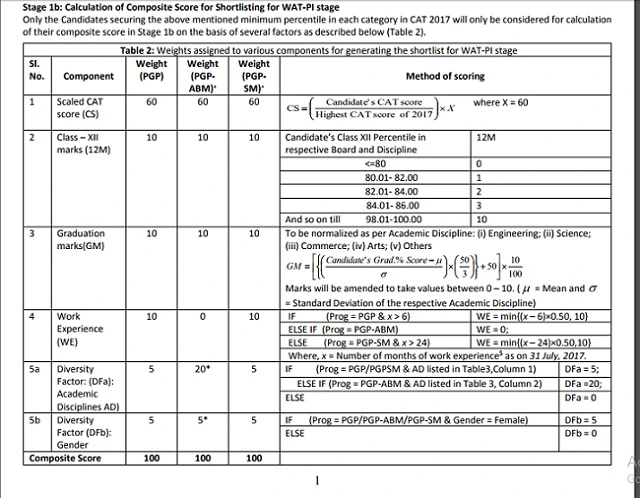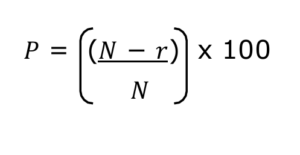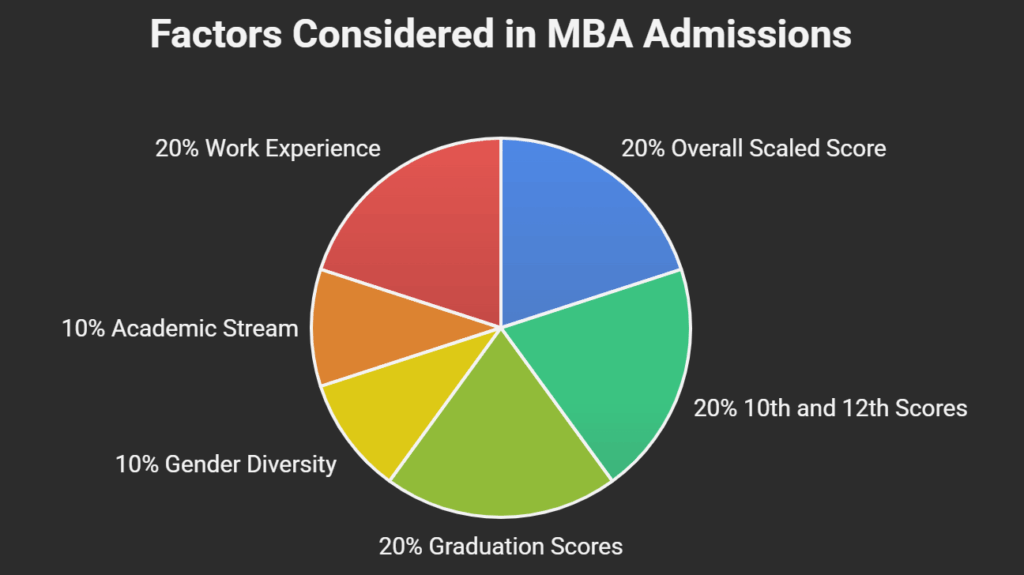The CAT is one of the toughest and most competitive MBA/PGDM entrance exams in India. Lakhs of aspirants appear for it every year! Since the exam is held in multiple shifts, the difficulty level can vary a bit from one slot to another. To keep things fair, CAT uses a normalization process that adjusts your raw marks into a scaled score. This score is then used to calculate your percentile.
Later on, this scaled score contributes to your CAT composite score, which plays a major role during IIM shortlisting and final selection. In this blog, we’ll simplify the CAT 2025 normalization process and show you exactly how the CAT score is calculated. Plus, we’ll also walk you through how to use the CAT Score Calculator step by step.
The CAT normalization process is a statistical method used to ensure fairness when the exam is conducted in multiple slots. The CAT exam 2025 will be held in three sessions on the same day. Therefore, the difficulty level of each slot may not be exactly the same. To maintain equality, the raw scores of candidates are scaled and normalized. This is done so that no aspirant is at an advantage or disadvantage due to the slot they appeared in.
In simple terms, normalization in CAT adjusts your raw marks into a scaled score. It’s done by comparing the performance of candidates across different shifts. This scaled score is then used to calculate your CAT percentile. Later, IIMs use this percentile (along with other parameters) to prepare the composite score for shortlisting.
For example:
The official IIM CAT scorecard will display both your scaled scores. Both section-wise and overall, and your percentile rank after normalization.
When you appear for CAT 2025, the direct marks you get from the exam are called your raw score. However, since CAT is conducted in multiple slots with slight variations in difficulty, IIMs do not use raw scores directly to calculate percentiles. Instead, they use a scaled score in CAT.
So, what is a scaled score in CAT?
A scaled score is your raw score adjusted through the CAT normalization process. This ensures that candidates from different slots are evaluated on an equal footing.
Let’s look at the CAT Composite Score Calculator for WAT-PI issued by IIM Lucknow:

The following steps are followed to calculate a candidate’s scaled score for three sections, i.e. VARC, DILR and QA. The overall scaled score is obtained by adding the three sections’ scaled scores.
Here’s how the scaled score is calculated step by step:

After scaling, IIMs calculate percentile scores to rank candidates. The percentile shows the percentage of candidates who scored less than you.
The steps to calculate the CAT percentile score are as follows:

Percentiles are reported for each section (VARC, DILR, QA) as well as the overall CAT score, and are the basis for IIM shortlisting.
.png&w=1920&q=75)
Scoring well in CAT is only the first step. While your CAT percentile decides if you get shortlisted, the final admission decision at IIMs is based on the composite score. The CAT composite score is a weighted score that includes your CAT performance along with other academic and personal profile parameters. Each IIM prepares its own formula, but the overall process follows a similar structure.
A composite score is the final score used by IIMs to shortlist candidates for the Written Ability Test (WAT), Personal Interview (PI), and the final admission list. It is not based on the CAT percentile alone; instead, it combines multiple factors.
Key Components of the IIM Composite Score
While the exact formula varies by institute, a typical calculation looks like this:
Composite Score= (CATScore × Weightage) + (Academics × Weightage)+ (WorkExperience × Weightage) + (Diversity × Weightage)
Example:
Suppose IIM-X follows this weightage:
If Candidate A has:
Their Composite Score = 48 + 16 + 8 + 5 + 12 = 89/100
This is the number that finally decides their position in the merit list.

To calculate the composite score, candidates can use any CAT composite score calculator. IIMs and MBA colleges take into account the following:
However, do note that the CAT composite score and criteria slightly differ with each IIM.
| Parameter | IIM Ahmedabad | IIM Bangalore | IIM Calcutta | IIM Lucknow | IIM Kozhikode |
| CAT Score | 65% | 40% | 56% | 60% | 45% |
| Class 10 Marks | 10% | 20% | – | 10% | 25% |
| Class 12 Marks | 10% | 10% | – | 10% | 15% |
| Graduation Marks | – | 20% | – | 10% | – |
| Work Experience | – | 8% | 8% | 10% | 5% |
| Academic Diversity | 5% | – | – | – | 5% |
| Gender Diversity | 5% | 2% | 4% | – | 5% |
| WAT & PI (Final Round) | Yes (high) | Yes (high) | Yes (high) | Yes (high) | Yes (high) |
Note: Percentages are indicative based on previous years’ admission policies; actual weightages may vary slightly in CAT 2025.
Top Business Colleges in India 2025








Articles recommended for you

college

college

college

college

college

college

college

college

college

college
Chat with us